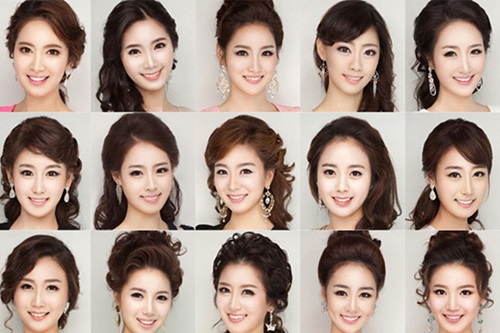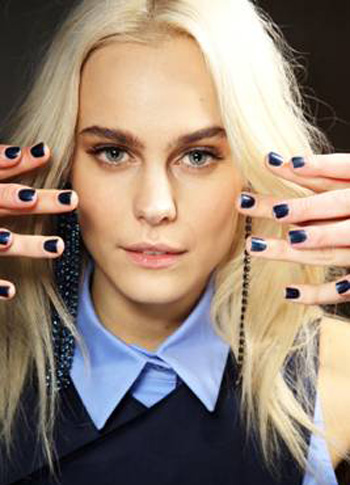SPA+CLINIC’s new team member Jessica Turner is Korean born and so has a particular interest in the burgeoning K Beauty boom. Here she looks at the forces behind the momentum and how it can be embraced by your business for happier clients and bigger profits.
South Korean beauty (aka K Beauty) was an emerging trend in 2015, but that was just the beginning.
“Whether it’s full-service spas, a seemingly limitless variety of face masks or 10-step skin- care routines, Korean beauty, for women and men, is much more than just a fad,” according to SpaFinder Wellness’ Trends Forecast for 2016.
“Look for South Korea to become the global leader of affordable, innovative and well-marketed products and more Korean-inspired spas, which combine spa and beauty with fun.”
According to government trade records, the Korean cosmetic industry doubled between 2014 and 2015. As of this year, it’s worth about $18 billion, and is considered the nation’s key industry.
In South Korea, women spend twice as much of their income on beauty products as their American counterparts, and men spend more on skincare than anywhere else in the world.
So not only is this country leading the field in innovative beauty and skincare products — such as cushion foundation — but are tailoring products for international markets, as well as borrowing ideas and using them for the home markets.
In its most recent report on global demographics, market research firm Euromonitor International emphasised the importance of brands (and thus salons, spas and clinics) recognising and catering to the rising ethnic and cultural diversity in traditionally Western countries, according to Cosmetics Design Asia.
“The changing ethnic, cultural and religious mix within Western societies is having a profound impact on consumer lifestyles, shopping behaviours and company strategies,” says Euromonitor.
“Australia has become the most diverse nation in the world. With foreign-born people accounting for 31 percent of its total population and a net migration (eight million foreign-born citizens) of 9.8 percent per 1000 population in 2013.”
Embracing global trends can most certainly give your business an edge when it comes to understanding a culturally diverse client base, and deliver more personalised services.
One of the opportunities this opens up for you as a salon, spa or clinic owner or therapist is to embrace your culturally diverse clientele and tailor services according.
Beauty nuances are no longer exclusively determined by Western ideals. In fact, some of the most popular makeup blogs online are dedicated to K Beauty, and, interestingly, much of this commentary is written by Caucasian key influencers with a genuine interest in keeping abreast of global trends.
The Korea Wave, referred to by enlightened people as Hallyu – which literally means “flow of Korea”; a neologism referring to the increase in the popularity of South Korean culture since the late 1990s – beached itself in Asia 10 years ago, influencing all fads, fashion and beauty.
Here’s how you can grasp the most pertinent K-Beauty truths to meet the specific wants of Asian clients:
#1 Truth: K-Beauty Aspires For Anime, Not Anglo Saxon

With an estimated 30 percent of the adult population opting for cosmetic surgery, Korea has a reputation for touting the tweaked and the tucked. The most popular types of procedures create “double eyelids” and wider eyes.
Exemplified by the 2013 “doppleganger” Miss Korea contestants (pictured above), huge, doll-like peepers are coveted.
One widely accepted myth in western culture (needing urgent correction) is that that Asians go under the knife to appear Caucasian.
The truth is that, rather than trying to emulate western physiology, eye surgery in Korea aspires to imitate the anime character — a symbol of beauty unique to Asia.
Enhance all eye shapes by retailing a lash-building mascara, like this one by Smitten Cosmetics, or this beauty by Scout Cosmetics.
#2 Truth: K-Beauty’s Arch Nemesis Is Arched Eyebrows

Korean/Australian beauty blogger, Jennifer Kim, is a major guru on the topic of Asian beauty trends. In one of her YouTube eyebrow tutorials, she explains that K-Beauty ideals hinge on looking “feminine and baby-like”.
Despite eyebrow trends in western culture waxing and waning, a precisely angled, deftly-defined arch reigns regardless. Conversely, straight, natural-looking eyebrows are key to crafting the soft, youthful K-Beauty look.
Bear this in mind if an Asian client comes to you asking for a brow shape. Don’t assume – but be sure to ask if they would prefer straight K-Pop brows, or the typical western archetype. Regardless of their preference, your cultural prowess will likely impress!
The straight-browed baby-face trend, beckons for subtle definition in ash-blonde tones. Suggest the lightest shade in your retail range like this Glo Minerals powder in Blonde...
Truth #3: K-Beauty Welcomes Excess Eye Baggage

All on board the K-Beauty train where eye bags are carried with pride. Yes, you heard right. If your clients are keeping tabs on the Ulzzang girls (aka Korean trend-setters), chances are they’ve cashed in cucumber slices to covet one of the most intriguing trends ever: Aegyo Sal.
Aegyo Sal translates directly from Korean as “eye bags” and refers to bulging deposits of fat underneath the eye.
Contrary to the Western school of thought, which tries to banish any eye baggage from puffiness to dark circles, K-Beauty know-it-alls consider Aegyo Sal as a symbol of youthful beauty.
Die-hard fans of the look opt for cosmetic surgery, but noting the abundance of online tutorials teaching viewers make the most of their eye bags, it seems faking it with makeup is the most preferred and painless option.
Show your savvy by recommending an illuminating pencil to make that puff pop like this one by Youngblood Mineral Cosmetics.
#4 Truth: K-Beauty Says Bright Is Greater Than White

If there’s one Asian beauty ideal everyone knows about, it’s that white skin is considered beautiful. Dating back to dynasty days, pale skin pronounced one’s position in the pecking order.
Park Tae Yun, the Korean cosmetics brand Son&Park, says that “the fashion in Korea right now is all about bright, glowing skin. Although fairness is favorable, shining clear, skin is far more important.”
It’s definitely not about bleaching. (For the record, bleaching is out – big time). Bright skin beams and gleams.
When recommending post-treatment products to a K-Beauty fan, be sure to put forward radiance boosting, dew dropping primer like the Elemis Pro Radiance Illuminating Flash.
#5 Truth: K-Beauty Believes Good Looks Come With Small Faces

Let’s face it, standards of beauty, both Eastern and Western, can be perplexing at the best of times. For example, take the scientific belief that large heads are attractive, because, according to psychologist Dr Konrad Lorenz, it reminds us of babies whose head is proportionately larger than their body.
Having trouble making sense of this, well, equally puzzling is the K-Beauty preoccupation with having exactly the opposite – a small face. Specifically one that isn’t dwarfed by the standard measuring device – a CD.
Scan social media and see how celebrities like Kim Kardashian use makeup to contour and reshape their features.
Asian clients who prefer to be porcelain pale will likely shy away from buying a contour kit, as the shades in a typical one range from brown to browner.
However, contouring the illusion of a small face is a hit among K-Beauty bloggers. Show them the ropes, but start simple with a bronzer/highlighter duo such as this gem from Bodyography.




